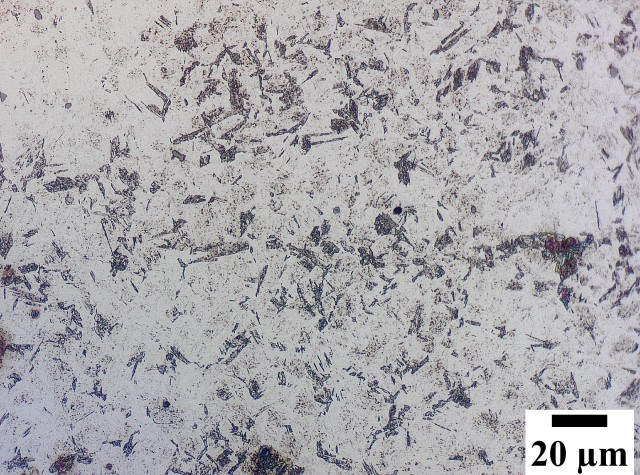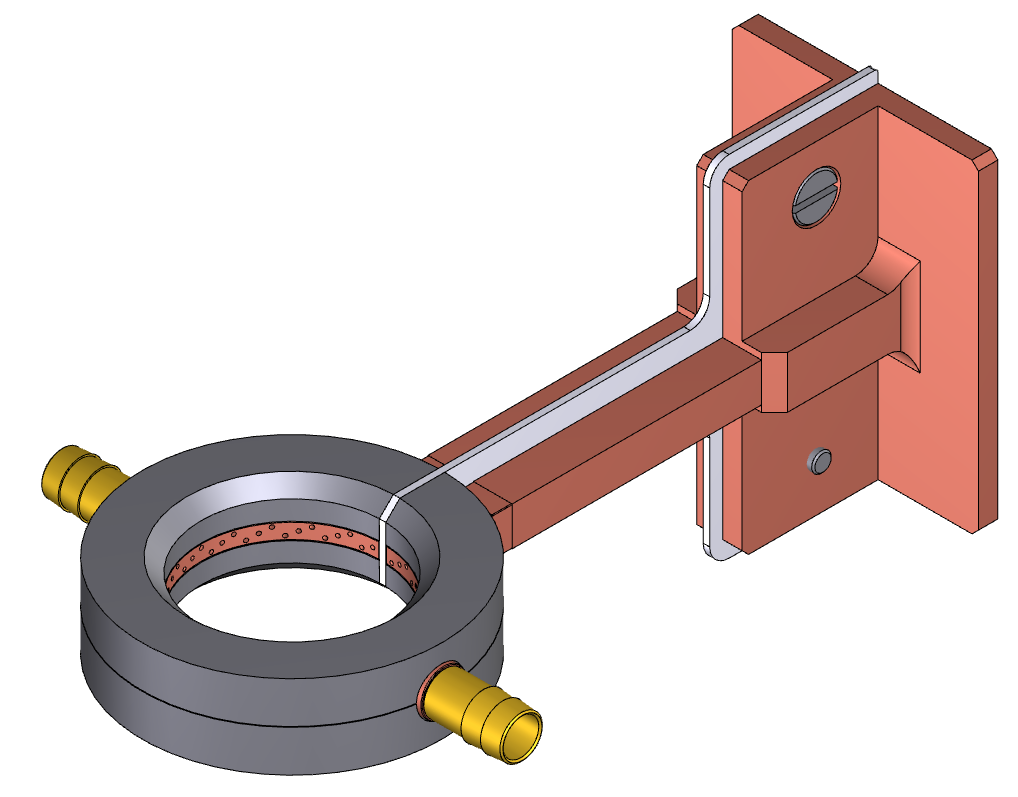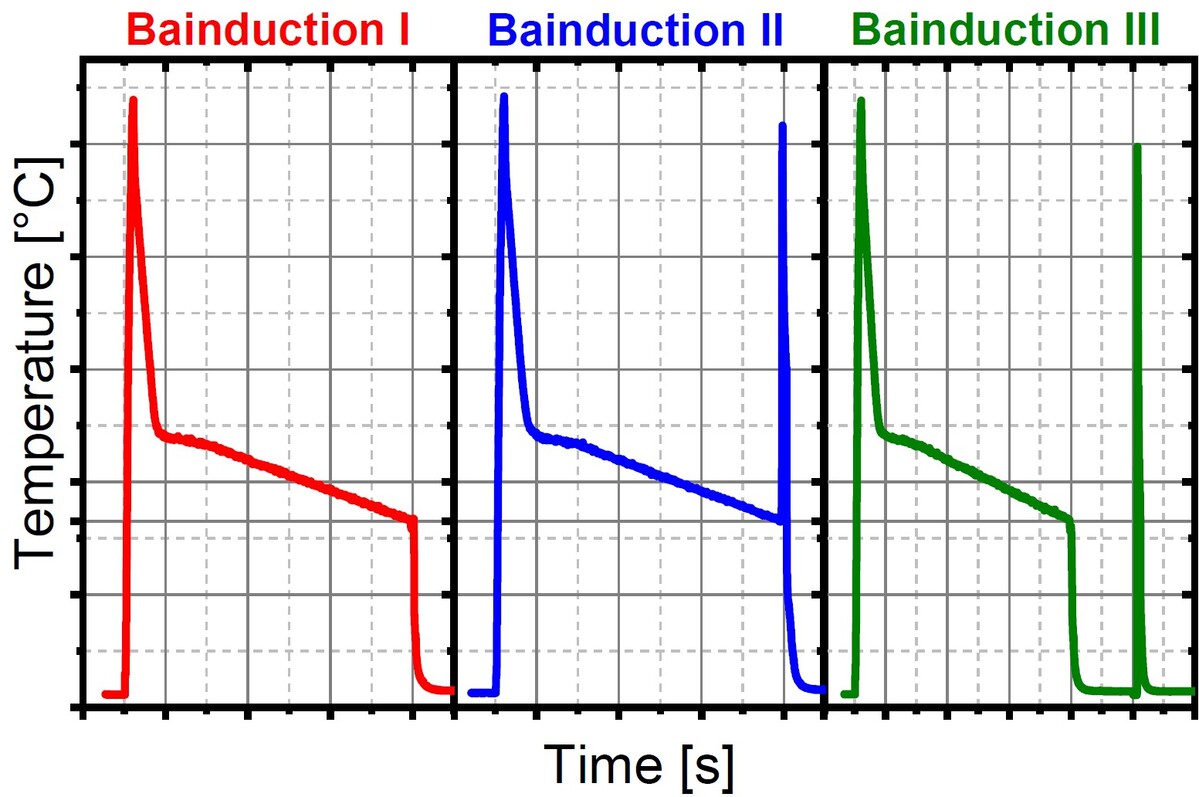Tailored bainitic-martensitic microstructures by means of inductive surface hardening for AISI4140
M.Sc. Fabian Mühl
Motivation
Inductive surface hardening processes are widely used in the manufacturing of automotive parts. They combine short process times with high economic and energy efficiency. Because of their high surface hardness, induction hardened steel parts feature beneficial wear resistance and also good fatigue properties due to the induced compressive residual stresses in the surface. Considering the positive effects on the mechanical properties by creating a bainitic-martensitic microstructure, outlined by severel authors, this project investigates the implementation of a temperature controlled inductive surface hardening process on a conventional hardening machine. Therefore an innovative inductor design, which allows a controlled sample cooling is presented. Supported by dilatometric studies as well as different heat treatment strategies, limitations are identified to gain a profund process understanding. By using different heat treatment strategies, the fraction of the bainitic phase can be adjusted in the surface of the part made of AISI 4140.
Goals
- Controlled induction hardening with an innovative cooling concept
- Increasing the strength of induction hardened parts by creating a mixed bainitic-martensitic microstructure
Goals
- Experimental controlled induction hardening experiments
- Characterization of the induced surface layer state
- Investigation of the mechanical properties
- Modeling and simulation of the induction hardening process



